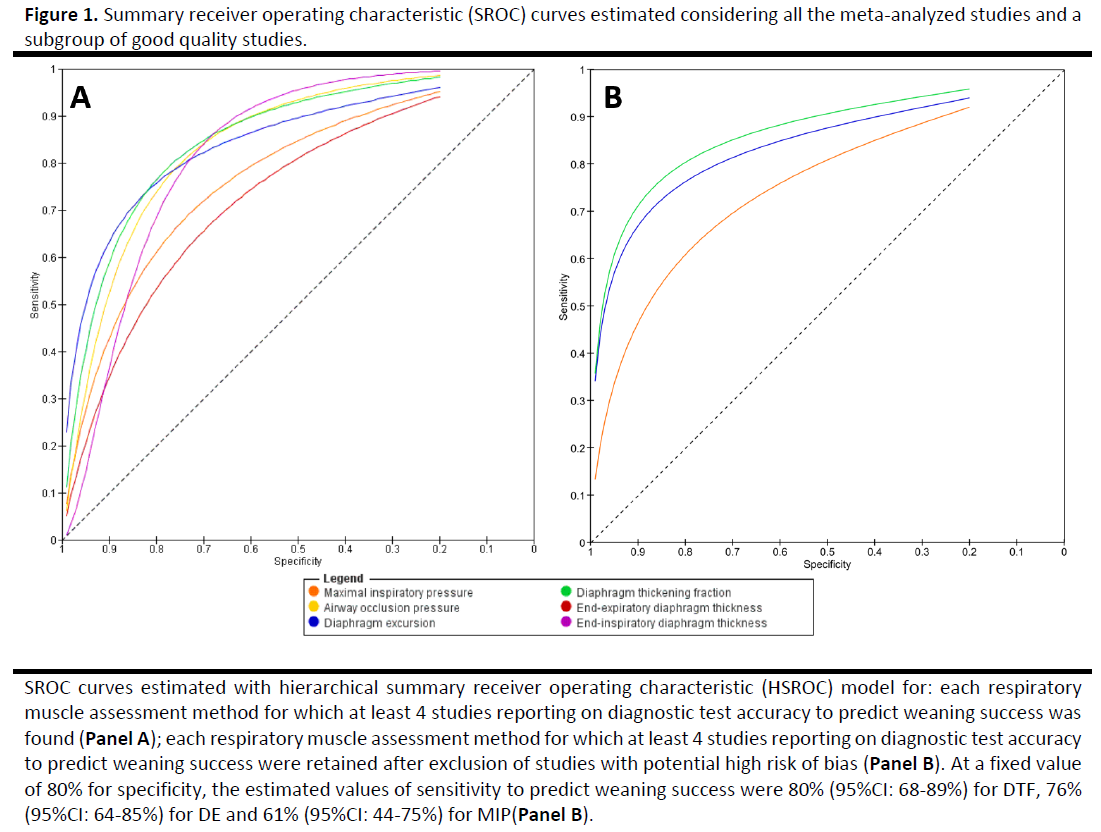Abstract
Background: The overall diagnostic accuracy(DA) of respiratory muscle assessments to predict weaning outcomes is under debate.
Aims: To summarize and compare the DA of diaphragm thickening fraction(DTF), excursion(DE), end-expiratory (Tdiee) and end-inspiratory (Tdiei) thickness, maximal inspiratory pressure (MIP), airway occlusion pressure(P0.1) to predict weaning success (WS) in ICU patients.
Methods: Pubmed, EMBASE, WoS, Cochrane Library, CINAHL were searched. Hierarchical summary receiver operating characteristic model was used to estimate the summary receiver operating characteristic (SROC) curves of each assessment. Meta-regression was used to compare SROC curves. SA were performed, excluding studies with potential high risk of bias, assessed with QUADAS-2 tool.
Results: 77 studies were meta-analyzed on DTF(n=44), DE(n=40), MIP(n=16), P0.1(n=14), Tdiee(n=9) and Tdiei(n=7). DA was not different between assessments (p>0.05)(Fig.1A). By considering the studies retained in the SA, DA of DTF was significantly higher than for DE(p=0.005). The apparent superiority of DTF on MIP was not statistically significant(p=0.08)(Fig.1B). At 80% specificity, the estimated sensitivity to predict WS was 80% for DTF, 76% for DE and 61% for MIP.
Conclusion: DTF seems to have superior DA compared to DE to predict WS, based on a subgroup of good quality studies.
